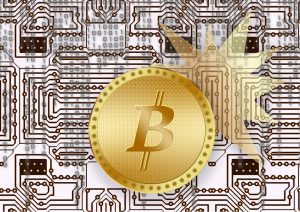
By Julio Gil-Pulgar,
Industrial giant G.E. has announced the new Internet revolution: The Industrial Internet of Things. G.E. promises the Industrial Internet will bring a new wave of digital products, which combines “Machine-to-Machine (M2M) communication, industrial Big Data analytics, technology, cyber security and automation.” The Industrial Internet, if successful, will expand the IoT astronomically. This, in turn, will further exacerbate the already existing IoT challenges related to frictionless payments, security, reliability, resiliency, and stability. This is precisely why Bitcoin and its blockchain technology can play a decisive role.
The Industrial Internet of Things
 The Industrial IoT is coming, bringing an “unprecedented convergence of machines, data, and people, redefining the way we work across industries,” said G.E.
The Industrial IoT is coming, bringing an “unprecedented convergence of machines, data, and people, redefining the way we work across industries,” said G.E.
According to G.E.’s definition, “The Industrial Internet is changing the way industries work. By combining Machine-to-Machine (M2M) communication, industrial Big Data analytics, technology, cyber security and automation, it is driving new levels of efficiency and productivity.”
To succeed in the Industrial Internet, G.E. is now entering the struggle for the software layer supremacy against Microsoft, Google, and IBM. As the New York Times puts it, “It is the next battlefield as companies fight to develop the dominant software layer that connects the machines.”
G.E. executives estimate that the Industrial Internet market will reach $225 billion by the year 2020.
The number of interconnected devices in the IoT continues to amaze observers. Last year, IDC forecast that by 2020, there will be more than 30 billion interconnected devices. Specifically, IDC research estimates that “the Internet of Things money market will grow from $655.8 billion in 2014 to $1.7 trillion in 2020 with a compound annual growth rate (CAGR) of 16.9%.”
Internet of Things Challenges
 The IoT already faces daunting challenges. Data management, security, privacy, and reliability are some of the main IoT issues.
The IoT already faces daunting challenges. Data management, security, privacy, and reliability are some of the main IoT issues.
Indeed, the IoT explosion caught many business organizations unprepared. Most current infrastructures, protocols, and business processes were not conceived to confront the colossal challenges that the IoT presents.
For example, the amount of data generated by this vast universe of interconnected devices will be massive, leading some to believe that corporations are not capable of extracting the benefits of IoT data. Adam Wray, CEO, Basho Technologies, argues, “Internet of Things (IoT) data has the potential to generate insights that will enable corporations to offer superior products. However, most companies do not have the core infrastructure in place to start leveraging IoT data.”
The unprecedented amount of data being generated and collected has even prompted the National Security Agency (NSA) to study the evolution of privacy in the IoT context and to publish a report entitled “Privacy in the Internet of Things.”
Security and privacy IoT challenges also worry technology enterprises. According to Microsoft, the converging of the cyber and the physical worlds makes security, privacy, and compliance challenges unique to businesses worldwide.
Resilient and secure IoT infrastructures are crucial in a universe where billions of interconnected devices exchange data and services, unattended, without human intervention. “In this new world, the old thinking of disaster backup and manually executed recovery procedures does not apply,” says Michael Puldy, Director of Global Business Continuity Management for Global Technology Services, IBM.
The Blockchain Can Help the Industrial Internet of Things
 The challenges confronted by the IoT and now the Industrial Internet highlight the fact that existing approaches to deal with security, privacy, and resiliency issues are becoming obsolete. Consequently, we need new ways of doing things. Bitcoin and its powerful blockchain technology can help to implement a dramatic paradigm shift.
The challenges confronted by the IoT and now the Industrial Internet highlight the fact that existing approaches to deal with security, privacy, and resiliency issues are becoming obsolete. Consequently, we need new ways of doing things. Bitcoin and its powerful blockchain technology can help to implement a dramatic paradigm shift.
Granted, Bitcoin’s blockchain challenges are still being addressed. Nevertheless, it is the strongest blockchain for IoT if we consider its decentralized and trustless nature, making it resilient and always accessible. It can reside in millions of devices or nodes distributed all over the planet. Each of these nodes keeps and maintains the entire blockchain. If one node fails, all the others continue to function, preserving the blockchain.
The blockchain is transparent. Everybody can see all the transactions registered in the blockchain. Also, alterations in the blockchain cannot occur without being detected
Bitcoin’s blockchain facilitates the automation of digital businesses by allowing the execution, without depending on human intervention, of smart contracts. Smart contracts are “computer protocols that facilitate, verify, execute and enforce the terms of a commercial agreement,” as defined by Nick Szabo. Moreover, assets and documents can also be digitally expressed as “Smart Assets.”
Thanks to its blockchain, Bitcoin is the ideal cryptocurrency for millions of smart devices performing frictionless financial transactions, such as micropayments, in the IoT universe.
